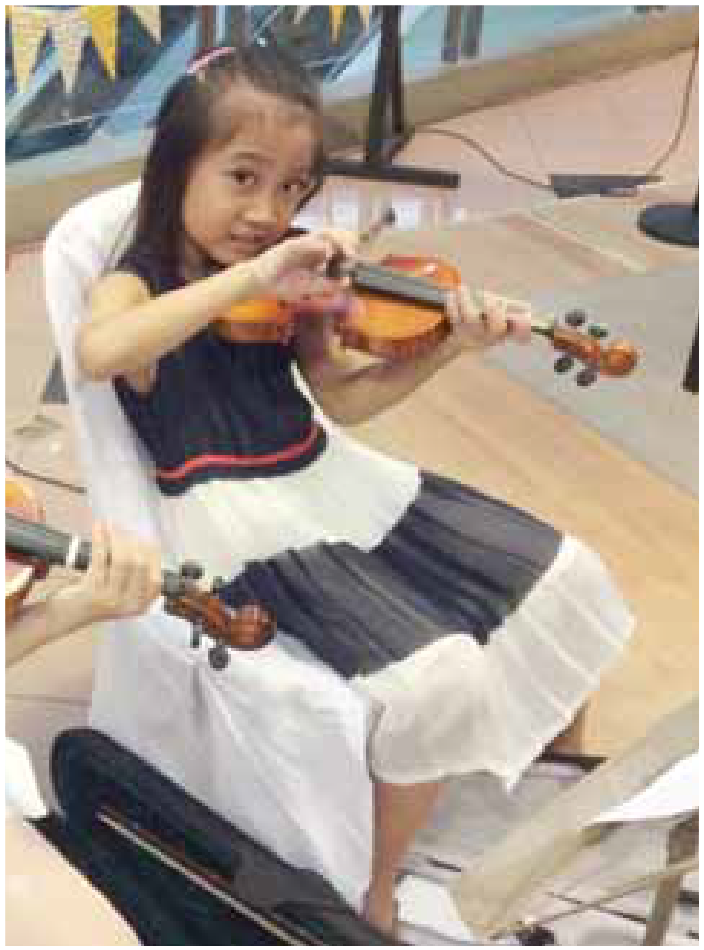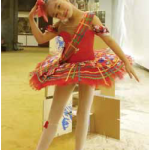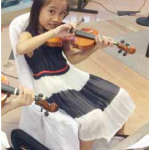You know you’re Tsinoy when you have a piano in your living room and had piano lessons whether you wanted to
or not.
We had a high-quality piano when I was growing up. My mom bought it at a hugely discounted price from a friend who was migrating to the US. With the piano came the lessons – forced lessons.
My mother has a beautiful soprano voice. I sound like a screeching macaw. I also have no sense of rhythm and am practically tone deaf. Suffice it to say, I hated the piano lessons imposed on me which Mom said was “for the discipline it demands.”
I know I reached up to the blue Michael Aaron Piano lesson book because I recently came upon it while decluttering. I don’t really remember how many years I went to my sweet teacher in San Juan. I prefer to forget those years; I remember the lemon drops she always gave her students though.
My brother began piano lessons when he was five and continued for two years until I put my foot down and refused to take any more lessons – that meant he could stop as well.
Now a parent myself, I regret not taking the lessons seriously. I would love to play the piano seamlessly and show off to my children, and reinforce their delusion that I am omniscient and omnipotent!
My husband plays classical guitar and taught himself to play the ukulele. Because of a ballerina-mouse on television, Achi decided when she was 2 years old that she wanted to be a ballerina. Shobe began asking for violin lessons at 3 years old when Ahma showed her a video of a Norwegian violinist who played “My Way” and made Frank Sinatra cry. Ahma had to keep that video on her desktop because every time she turned her computer on, Shobe would saunter in and ask to watch it.
Four seems to be the magic number for us. Ballet Philippines at the Cultural Center of the Philippines allows beginners only when they turn four. A violin teacher finally agreed to take Shobe on when she was four.
Over the years, when we ask the girls what they want to be when they grow up, one thing never changes for Achi. At four, she wanted to be a scientist-rock star-ballerina. At 6, she wanted to be a Math teacher-pop star-ballerina. Now at 9, she wants to be an inventor-teacher-singer-ballerina.
On the bulletin board at Ballet Philippines, I just read about how dancers should also be physically active in other activities. While other dance forms have aerobic activities embedded in it, learning ballet is a little slower, especially in the early years. Achi has progressed quite quickly, moving up two levels in four years.
Regular dance practice increases flexibility, range of motion, physical strength and stamina. The repetitive movements help improve muscle tone, correct poor posture, increase balance and coordination and improve overall cardiovascular health.
Dancing is not just about developing discipline through practice. When children dance and cannot seem to figure out the steps or the rhythm, their perseverance provides an opportunity for them to realize that there are multiple solutions to problems.
Dance education teaches the values and skills of creativity, problem solving, risk tak- ing, making judgments in the absence of rules, and higher-order thinking skills.
A friend of mine once said, dancing, particularly ballet, strengthens the self. It is always challenging the self to be better, not just in dance, but in all facets of life.
Increasing self-esteem means that the child also interacts better with peers.
Shobe meanwhile is just plain talented (or maybe it’s just the stage mother in me talking). She is not progressing well in violin because there is no one at home to help her practice.
The teacher subscribes to the Suzuki method where the parent is a crucial factor in terms of helping the student practice her fin- gers, her bow movement. Meanwhile, Shobe is more excited with ukulele because it is easier for her, and also because Tatay is trying to learn to play “Bohemian Rhapsody” on it.
She recently learned to play sol-do-la-fa-mi-do-re from The Sound of Music. Tatay strums an accompanying beat and she plays according to that rhythm. My aunts and uncles are fascinated because she does not have to look at her left hand anymore when changing chords.
In an interview with Time magazine in 2014, Nina Kraus, director of the Auditory Neuroscience Laboratory of Northwestern University, outlined the results of her team’s study on how engaging in music changes the brain. It is not enough that the child listens to music; the child should be actively engaged in making music.
Kraus’s team partnered with The Harmony Project, a community music program serving low-income children in Los Angeles, California. Since 2008, 93 percent of Harmony Project seniors have gone on to college, despite a dropout rate of 50 percent or more in their neighborhoods, an impressive achievement.
Kraus’ team then did an empirical study on brain activity. They attached electrodes to the children’s heads and found that neural processes in the brain are strengthened when they are engaged in music-making.
This study also debunked the perception that listening to certain types of music improves intelligence. But don’t delete those Baby Mozart downloads just yet. They are still amazing pieces for babies and children to listen to. We just need to step back and not expect classical music to increase IQ.
On the behavioral side, research reveals that after two years, those who participate in music class (and not just sit there) show larger improvements in how the brain processes speech and reading scores than their less-involved peers.
Compared to me, my children are loving their lessons. Achi recently asked permission to audition as a Ballet Philippines’ scholar when she turns 10. Shobe is excited because her father has begun to join her in violin lessons and they practice at home.
Meanwhile, I’m enjoying something my mother never enjoyed – program recitals with non-complaining, really happy children.







